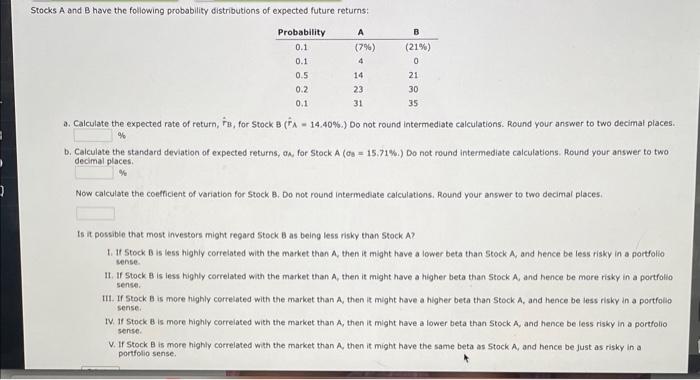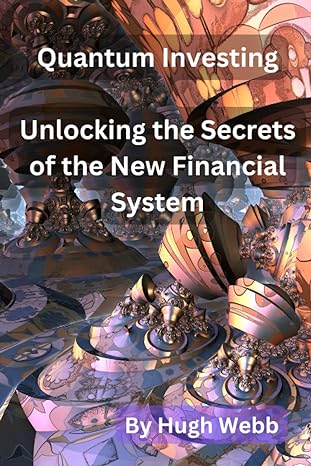Stocks A and B have the following probability distributions of expected future returns: a. Calculate the expected rate of return, rB, for stock B(FA=14.40%.) Do not round intermediate calculations. Round your answer to two decimat places. % b. Calculate the standard deviation of expected retirns, on, for Stock A ( s=15.71%.) Do not round intermediate calculations. Round your answer to two decimal places. \% Now calculate the coefficient of variation for Stock B. Do not round intermediate calculations. Round your answer to two decimal places. Is it possible that most investors might regard Stock B as being less risky than Stock A ? 1. If Stock B is less highly correlated with the market than A, then it might have a lower beta than Stock A, and hence be less risky in a portfolio sense. 11. If Stock B is less highly correlated with the market than A, then it might have a higher beta than Stock A, and hence be more risky in a portfolio sense. III. If 5 tock B is more highly correlated with the market than A, then it might have a higher beta than Stock A, and hence be less risky in a portfollo sense. IV. If Stock B is more highly correlated with the market than A, then it might have a lower beta than Stock A, and hence be less risky in a portfolio sentise V. If Stock B is more highly correlated with the market than A, then it might have the same beta as Stock A, and hence be just as risky in a portfolio sense. c. Assume the risk-free rate is 2.506 . What are the Sharpe ratios for Stocks A and B ? Do not round intermediate calculations. Round your answers to four decimal places. Stock A: Stock B: Are these caiculations consistent with the information obtained from the coefficient of variation calculations in Part b? 1. In a stand-alone risk sense A is less risky than B. If Stock B is less highly correlated with the market than A, then it might have a higher beta than Stock A, and hence be more risky in a portfolio sense. II. In a stand-alone risk sense A is more risky than B. If Stock B is less highly correlated with the market than A, then it might have a lower beto than Stock A, and hence be less risky in a portfolio sense. III. In a stand-alone risk sense A is more risky than B. If Stock B is less highly correlated with the market than A, then it might have a higher beta than Stock A, and hence be more risky in a portfolio sense. IV. In a stand-alone risk sense A is less risky than B, If Stock B is more highly correlated with the market than A, then it might have the same beta as Stock A, and hence be just as risky in a portfolio sense. V. In a stand-alone risk sense A is less risky than B. If Stock B is less highly correlated with the market than A, then it might have a lower beta than Stock A, and hence be less risky in a portfolio sense








